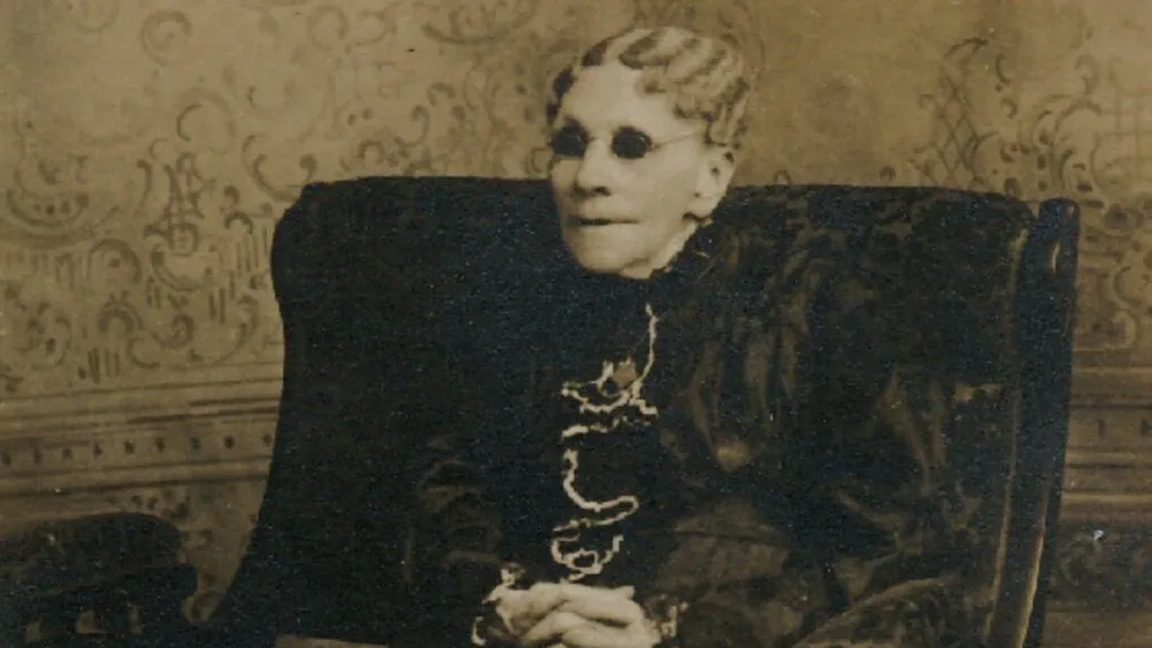APH Museum’s Braille Readers Theater to present “Their Story, Their Song,” August 25-26, 2023

Make time at the end of August to attend “Their Story, Their Song,” a new play written by B.T. Kimbrough and presented by the APH Museum’s Braille Readers Theater troupe. Yes, the Museum is closed, but people putting on live theater always to find a way to perform.
All the actors in Braille Readers Theater are blind. They read their scripts in braille, either embossed on paper or through electronic devices called notetakers. There is minimal onstage movement, but gestures as well as costumes and props are used to help transport members of the audience who are sighted into the world of the play.
When the show starts, you’ll meet Thomas, who hosts a history podcast, “Let’s Be Real,” in his basement studio. He loves the stories history tells, and he insists on absolute historical accuracy. He’s willing to put in the hours of research that entails.
Thomas is not unlike the play’s author, B.T. Kimbrough. Stuck at home for a year and a half of Covid quarantine, he started a pandemic project: to find out everything there was to know about Fanny Crosby, the prolific nineteenth century lyricist and hymnwriter. He’d always been a fan, and as a child he was fascinated because her name so often appeared in the Baptist hymnal.
“Suddenly I had all this time for reading,” Kimbrough said. “I read somewhere that 2020 was the 200th anniversary of Fanny Crosby’s birth, so I read a biography and then other accounts of her life, including her two autobiographies. I met this fascinating person who was full of surprises. It turned out that her story was something I just had to share with a wider audience.”
Before he retired and moved with his wife Paula back to Louisville, Kimbrough was a writer, a publisher, and a musician. He directed choirs and played in bands and wrote songs. In Louisville, he heard about Braille Readers Theater. Cast as the lead in his first audition, he quickly became one of group’s stalwarts.
He might have chosen to publish the research he’d done on Fanny as an academic essay or post it online, but with all that creativity in his head, his inclination was to turn it into a play –not something solemn and formal, something light-hearted and fun that conveyed the messages about faith and joy that Fanny put in her lyrics. In fact, many of the lines Fanny speaks in the play are from her letters and her autobiographies.
Kimbrough found out that Fanny hated the one-dimensional label of “blind-hymnwriter,” but that’s how she was known to the public, both then and now. He wanted her to be a fully realized character on stage and believed “that the private Fanny could only emerge in the play if I paired her with someone who was actually a dear friend from real life.”
That someone was Phoebe Palmer Knapp, a friend of Fanny’s for forty years, the wife of a wealthy business man who composed music and volunteered n missions. History records that the two got together in Phoebe’s residence in 1873 and that the meeting resulted in what is perhaps Fanny’s best known hymn. The dialog may be Kimbrough’s invention, but it sounds real: they chat, they reminisce, they fall into fits of giggles, and they write songs together.
Cast as Fanny Crosby is the multi-talented Barbara Henning, who doesn’t play the role as much as she inhabits it. There’s even a physical resemblance. Terrie Terlau plays Phoebe Palmer Knapp as haughty and imperious, as befitted her position in the top echelons of New York society during the Gilded Age.
“Working closely with Barbara and Terrie to gradually bring our Fanny and Phoebe to life has been nothing short of thrilling,” he said. “Not only have they made the words come alive, but they have showed me dozens of things in their characters that I didn’t discover on my own, feelings and reactions that call for new lines, which in turn create new discoveries.”
Next to her faith, Fanny loved music most, and the play, while not a musical, has plenty of music in it. There’s a chorus, featuring Deanna Scoggins, Ian Bray, Kathy Szinnyey, and Fred Otto. Sometimes the audience is invited to sing along. (You’ll know most of the words, but if not, they’re printed in the program.)
Because the APH Museum is closed for renovation, the Museum had to find an alternate performance venue. A library? A school auditorium? Neither was quite right, and then the perfect place appeared: The Crescent Hill Presbyterian Church sanctuary. Fanny’s story, Fanny’s words will be heard again, in this 21st century, in a place of warmth and love. And yes, her hymns are in the Presbyterian Church hymnal.
Performances are Friday, August 25, at 7 pm, and Saturday, August 26, at 1 pm, both at the church. The address is 142 Crescent Avenue.
The performance is free, but reservations are required. Make reservations by calling 502-899-2213 or emailing kcarpenter@aph.org. The play is geared for an audience of adults and older children, but younger ones are welcome. They might not get all the jokes, but they’ll love the music and the laughter.
Katie Carpenter is the Museum Educator at the Museum of the American Printing House for the Blind.
